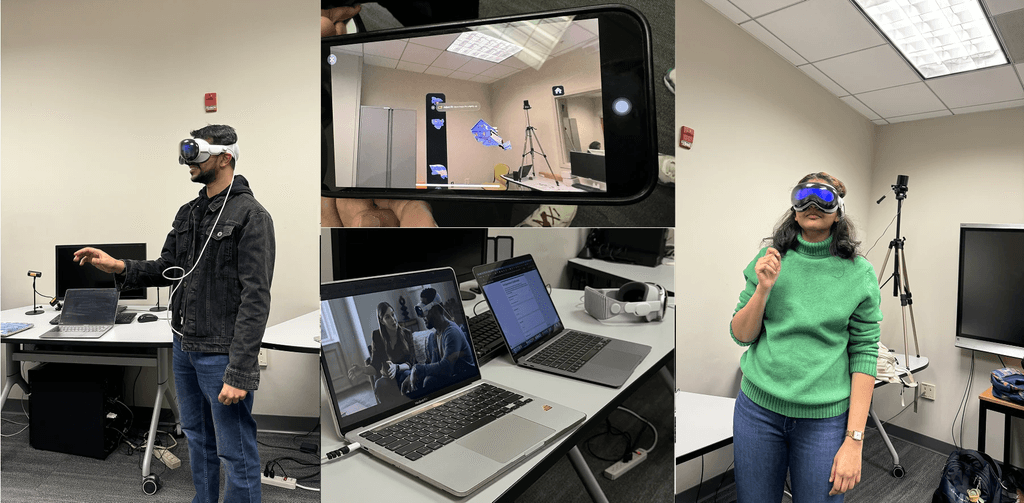

User Experience Refinement Puzzling Places on Vision Pro
Team
Duration
Role

Problem
VR puzzle apps achieve high satisfaction scores but suffer from hidden retention problems. Users abandon experiences despite rating them positively.
Impact
Implementing the proposed UX improvements could lead to a 20% boost in user retention, a 30% increase in average session length, and achieve 95% task parity between novice and experienced users.
Research Question

Research Goals
Methodology
I conducted a mixed-method study with two participants. Users completed a puzzle-building task while I tracked interactions, emotions, and performance through: Usability testing, Game Experience Questionnaire (GEQ), Emotional journey mapping and Heatmap analysis
More Pieces!?

Key Research Findings
Interaction Heat Map
Red Areas - High friction points like piece rotation and hidden menu items
Orange Areas - Moderate issues with rotation and unexpected gestures.
Green Areas - Smooth interactions, including accurate placements, easy selections, and stable assembled pieces
Emotional Journey Mapping
Both participants followed identical satisfaction curves:
Stage 1: Initial excitement (4.2/5)
Stage 2: Rotation frustration (2.1/5) ← Critical satisfaction drop
Stage 3: Discovery phase (3.8/5)
Stage 4: Task completion (4.6/5)
Experience Level Paradox
Surprising Discovery: VR newcomers matched experienced users in task completion after tutorial.
Implication: Spatial puzzle experiences could serve as ideal "gateway" VR experiences for broader market adoption.
Recommendations
Problem
Solution
Expected Impact
Problem
Solution
Expected Impact
Problem
Solution
Expected Impact
Problem
Solution
Expected Impact
Projected Impact
REFLECTION
Small friction points in VR have an outsized effect on the overall experience. But with the right onboarding and thoughtful interaction design, even VR novices can quickly match experienced users.
Spatial puzzles like this could serve as ideal “gateway” VR experiences
Addressing physical comfort (glasses, motion sickness) is essential
Retention depends not just on novelty, but continued engagement












